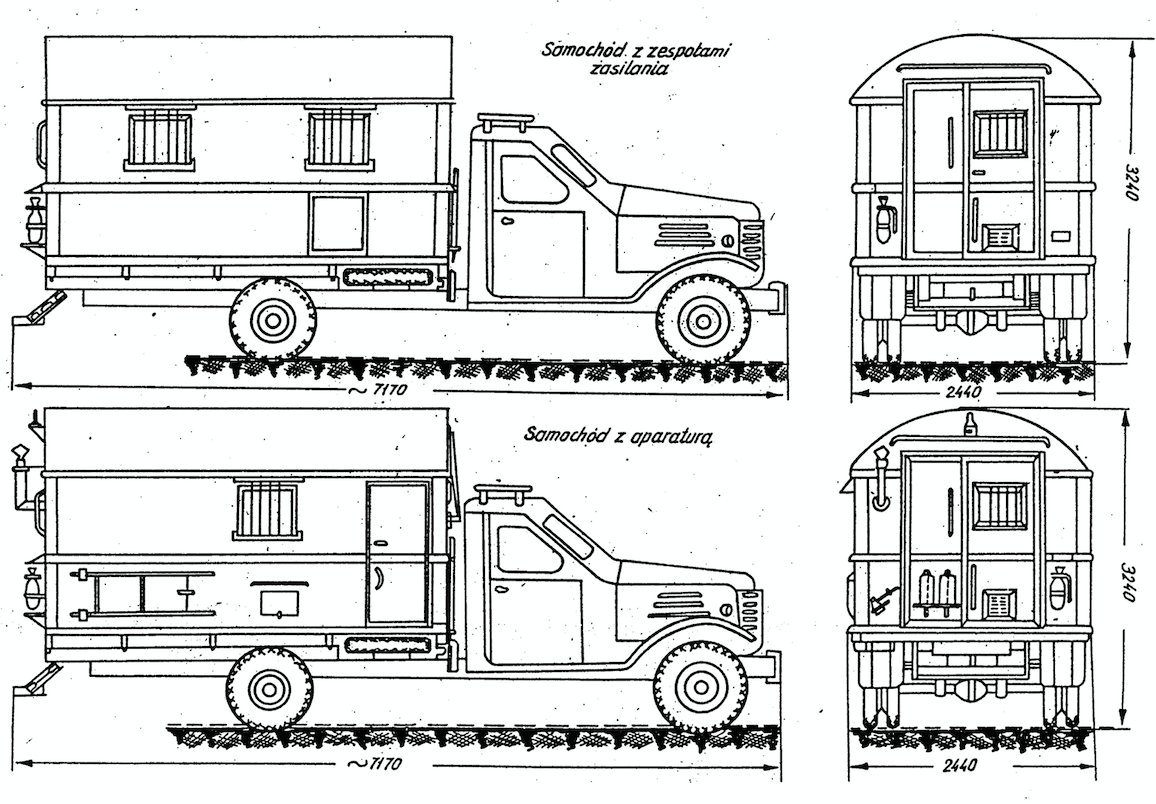2021 year
Marek Kaiper
Guiding radio stations (beacons).
Beacons, also called PAR (Privodnaya Aerodromnaja Radiostante) guiding radios or otherwise (Privodnaya Avyacionnaya Radiostance) and APR (Avtomatizirowannaja Privodnaya Radiostante), are designed to cooperate with aircraft radiocompasses. In the 20th century, apart from aeronautical beacons, shoreline naval beacons operating in the 283.5 - 325 kHz range were also used. They allowed ships to take a bearing in order to establish their position on the map. These beacons were replaced with the use of the GPS satellite navigation system.
In the times of the Polish People's Republic, aviation beacons provided the supply of an aircraft equipped with an automatic radiocompass ARK-5 (TS-8, MiG-15 bis, MiG-17, MiG-19), ARK-9 (Mi-14, An-2, TS- 11), ARK-10 (Su-7, MiG-21), ARK-11 (An-12, An-26), ARK-19 (MiG29), ARK-22 (Su-22)) to the airport area.
The hand of the radiocompass shows the pilot the direction to the working beacon, to the frequency of which the radiocompass has been tuned, while maneuvering the plane, the pilot may set the hand of the radiocompass to zero and make a flight to the airport on the radios. The ARK-10 and ARK-11 radiocompasses are additionally equipped with a system indicating the distance from the beacon (counter). The distance measuring system works by measuring speed and time (an air speed transmitter is connected to the radiocompass). Some airplanes and helicopters (An-12, Mi-8, Mi-14, Mi-17, Mi-24) were additionally equipped with a VHF ARK-U2 radio compass, it allowed to indicate the direction to a working VHF radio station of another aircraft or a ground radio station (on example, the R-824, R-831, R-845 or other airport communication radio station) as well as the VHF R-855U rescue radio beacon.
The set of beacons includes MRM-48 transmitters (radiomarkers) or other ones operating at the frequency of 75 MHz. They indicate to the pilot in a light and acoustic manner (aircraft receiver MRP-48, MRP-56M (A-611), RPM-76 (A-611A) the position in the runway axis and the flight over the distal or closer beacon. Signal received by the aircraft receiver. MRP-56P can also activate the automatic switch of the UAP-1 radiocompass (switching from the frequency of the more distant beacon to the frequency of the closer beacon), provided that the landing gear is extended. In (Je 615), RL 3301-2 "Krokus" with NR2307 transmitter, PAR-9M2 radio beacon with Je 615.5 radio signal transmitter This beacon, like PAR-9M, was supplied with 400Hz voltage from the AŁA-1.5 MB1 converter.
Beacons could work in the communication or conducting type of work, in each of these types of work they could work in the telegraph, tonal or telephone range. The most frequently used type of work was "leading", the beacons then worked with the telegraph system transmitting signals in the Morse code (one or two letters of the airport code name, DRL two letters first and last, BRL first letter) from a mechanical or electronic APS device (automatic signal feeder) . In PAR-7 beacons it was possible to broadcast a suitable melody or song from a turntable (adapter) or tape recorder, which served as the guide signal. The beacons were equipped with the VHF R-809M or RS-6106 radio (RL-3301 "Krokus") intended for communication with the flight command post (SD, SSD) and with US-P radio receivers of older models as well as R-880 and OR-1205 'Oleander' (RL-3301 'Krokus') newer. With the help of the R-809 radio, the flight manager could provide the pilot with information or commands (VHF signal retransmission to the frequency of the beacon "channel 21") in the event of failure of the aircraft radio. In other words, the radiocompass could serve the pilot as an emergency receiver for commands from the ground.

Written by Marek Kaiper
